
Crop Protection Methods That Boost Farming Productivity
Crop protection helps to keep plants healthy and maintain sustainable yields. The choice of plant protection strategy depends on the type of cultures grown and the threat. It can be diseases, insects, or weeds. At the same time, measures must be timely and, wherever possible, preventive. Modern crop protection compounds make extensive use of digital solutions. They enable the precise analysis of soil and plant conditions and provide accurate information about external factors such as weather conditions. At the same time, they allow optimizing the use of resources. As a result, farmers can protect crops, increase profits, and minimize environmental damage.
What Is Crop Protection?
Crop protection combines strategies, tools, and products that protect against various pests. These include diseases, viruses, weeds, and insects. All of them can significantly lower or even kill plants. The best decision is to control the situation by reducing the risks rather than deal with the problem’s consequences. Culture protection allows farmers to monitor climate change and notice the appearance of dangerous weeds, pests, or diseases timely.
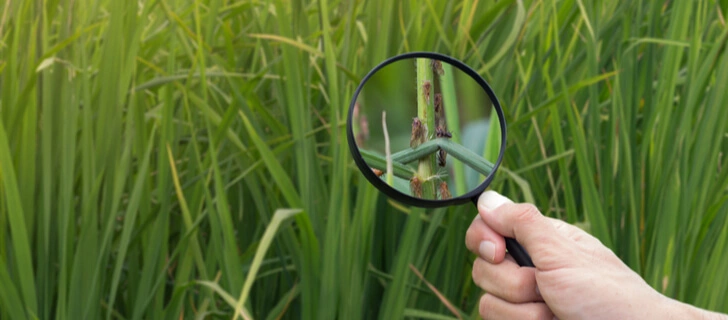
Why Crop Protection Is Important
There are many organisms in the agricultural ecosystem that can cause harm to plants. They slow down the development of plants, reduce their thickness, and generally harm yields. Timely preventive steps minimize the dangers. Moreover, the importance of crop protection in agriculture lies in conserving biodiversity and nutrients in the earth, optimizing the resources used, such as water, land, and labor, and consequently increasing the quality and lowering the food cost.
Benefits Of Crop Protection
Agricultural practices are vital in producing quality food and the ecosystem’s health. Therefore, along with introducing modern innovations into the sector, agricultural plant protection is an essential tool. The practice is continually evolving, providing precise mechanisms for preserving the health of plants. The main advantages of crop protection for farmers are:
- increased production of smaller areas;
- higher yields and consequently more food;
- protection of the environment;
- preservation of stored products.
Thus, agricultural plant protection creates all the necessary conditions for successful and sustainable agribusiness.
How Do Farmers Protect Their Crops?
Plants are exceptionally vulnerable: insects, rodents, disease, and air pollution can damage them and deprive growers of their yields. The diversity of hazards obliges farmers to use different strategies. Among the crop protection techniques are tillage, crop rotation, organic and synthetic pesticide use, field monitoring, etc.
There are several ways how to protect crops.
Chemical Crop Protection With Pesticides
Chemical crop protection is one of the most cost-effective ways of protecting plants. It also makes harvesting yields easier and provides stable growth during each season. Here are some popular chemicals.
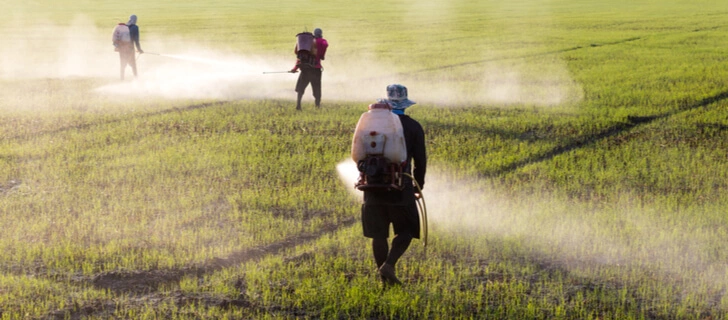
Herbicides. Farmers often use them to control weeds. Herbicides are suitable for killing actively growing weeds. They cannot eliminate weeds at the same time, but farmers use them before sowing or preventing new pests.
Insecticides are aimed at controlling insects. Several types of crop protection chemicals are applied in the soil (e.g., against worms), and others are used to treat foliage (e.g., against moths and aphids). Farmers scout a field to determine the best time to apply them; otherwise, insecticides are ineffective.
Fungicides in crop protection are used to control disease-causing fungal organisms. They allow increasing yield during the growing season and preserve stored products.
For optimal use of pesticides for crop protection, it is best to divide the field into zones according to the plant damage degree. It allows using resources rationally by applying only the necessary amount of chemicals. The EOSDA Crop Monitoring platform users can zone a field based on vegetation indices. These vegetation maps clearly show vulnerable areas whose conditions can result from plants infestation.
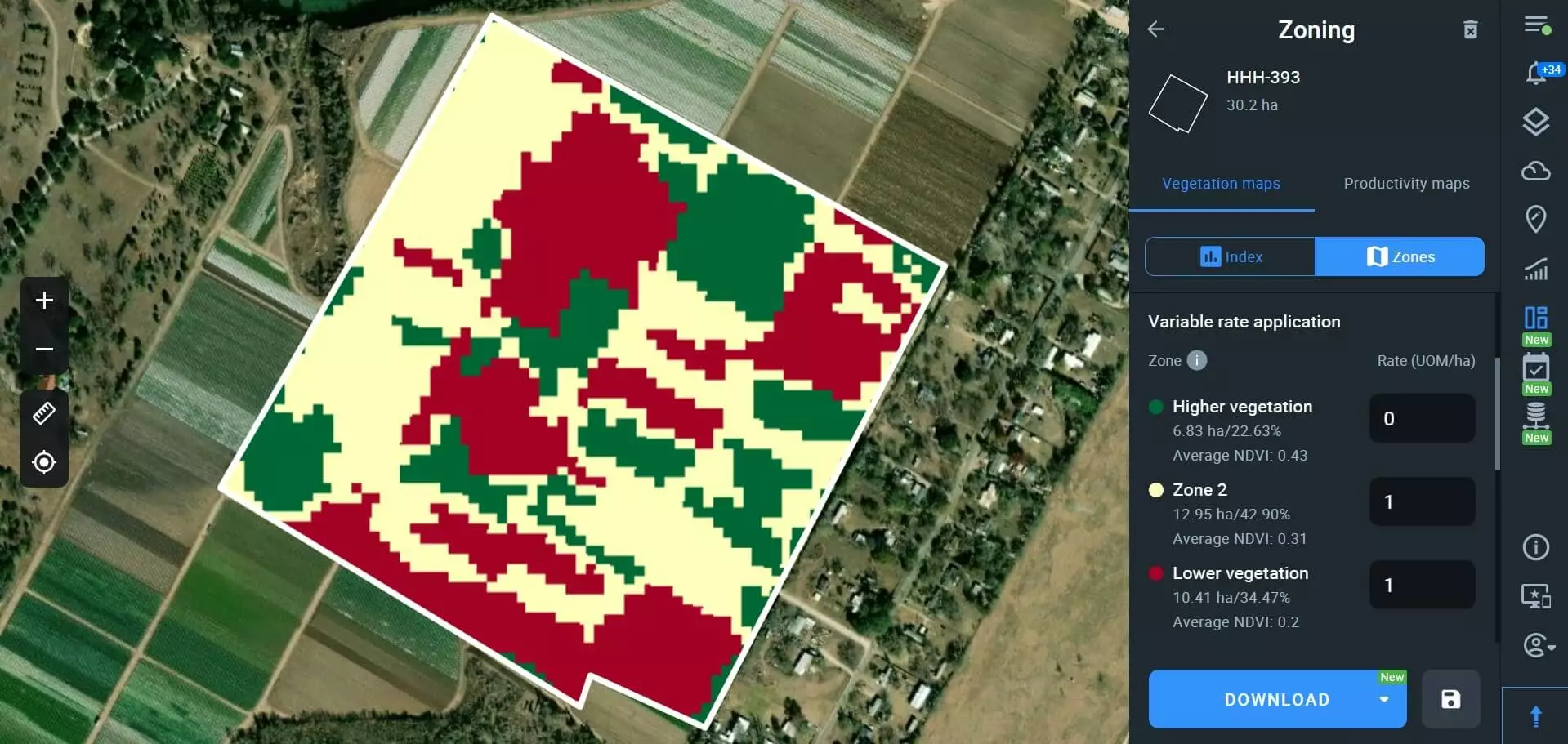
Biological Crop Protection
Biological control methods for crop protection include various products derived from living organisms. They are an excellent complement to chemicals and provide better protection against pests, diseases, and weeds. Biological plant protection products can be chemically synthesized but resemble natural products in their formulation.
No. However, they may be certified for use in organic agriculture. Accordingly, biologicals may be used as pesticides by organic growers.
Mechanical And Cultural Crop Protection
Cultural control can effectively reduce pest activity. One of the most common methods is replacing susceptible plants and new precision irrigation methods (e.g., reducing irrigation can deprive weeds of sufficient moisture and promote root health).
Mechanical crops protection controls help farmers to eliminate pests physically. They include barriers preventing insects and animals from entering the field, traps, mulching, soil solarization and steam sterilization practices.
EOSDA Crop Monitoring
Manage your fields with high-resolution satellite images for the most accurate and timely changes detection!
Crop Protection Management: Methods & Strategies
There exist various crop protection strategies, tools, and products. Moreover, the industry is constantly evolving, providing farmers with more and more effective methods of pest control. The choice depends on the area being farmed. Here are the most popular culture protection techniques.
Weed Management
Weeds are one of the major enemies of plants. They compete with them for nutrients, water, and space. As weeds are often aggressively growing and spreading plants, they can suppress and even destroy young plants. Proper protection of crops from weeds requires not only timely detection of the threat but also an understanding of the biological characteristics involved. You can use EOSDA Crop Monitoring to detect an affected zone and send scouts to analyze the situation.
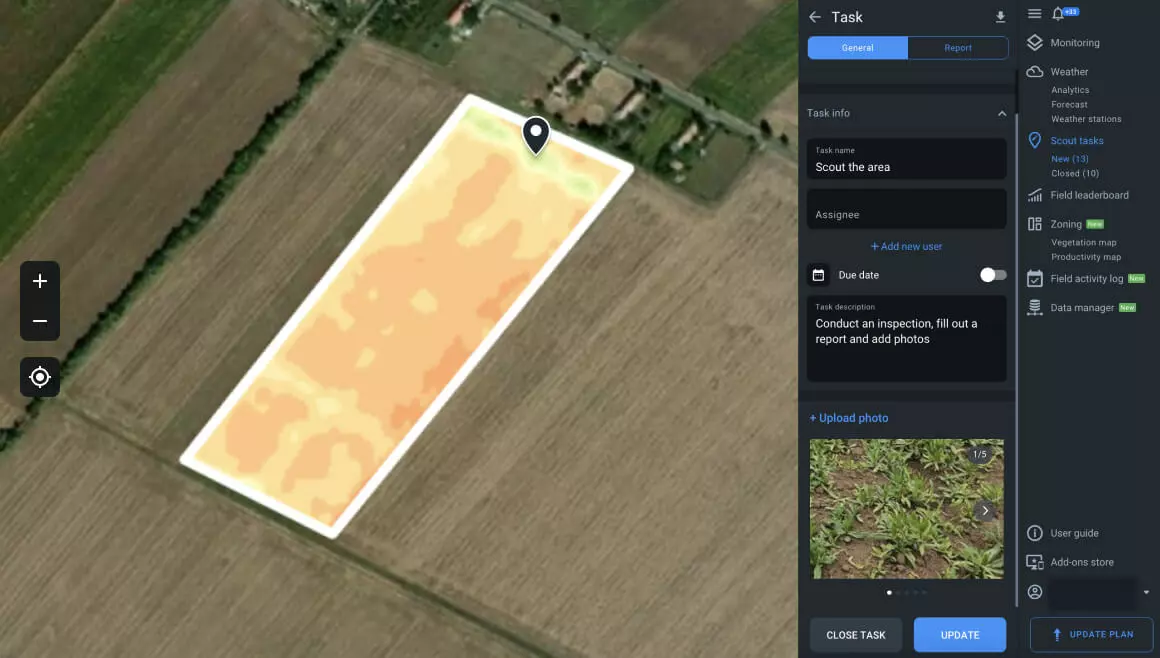
Crop protection from weeds involves preventive and control measures. The former include quarantine as well as special seed treatment and storage conditions. The latter include culture rotation, the use of herbicides, tillage, the production of competitive forage cultures, etc.
Disease Management
It is one of the most complex crop protection practices because various factors can influence diseases: plant age, genetics, environmental conditions, weather, etc. Consequently, it can be challenging to diagnose a disease, especially in the early stages of infection. It is, therefore, crucial to monitor the health of the plants regularly and analyze symptoms that occur sooner rather than later.
You can protect your yield against diseases by using one of the following methods:
- the application of chemicals;
- culture rotation;
- deep plowing;
- organizing quarantine;
- cultivation of disease-resistant species;
- heat treatment;
- regular monitoring of plant conditions.
Temperature stress is a frequent plant disease cause. EOSDA Crop Monitoring provides up-to-date weather forecasts and historical data that allow users to analyze trends and react preventively to extreme temperature fluctuations. For example, creating drainage to divert moisture during heavy rains or providing additional irrigation during droughts.
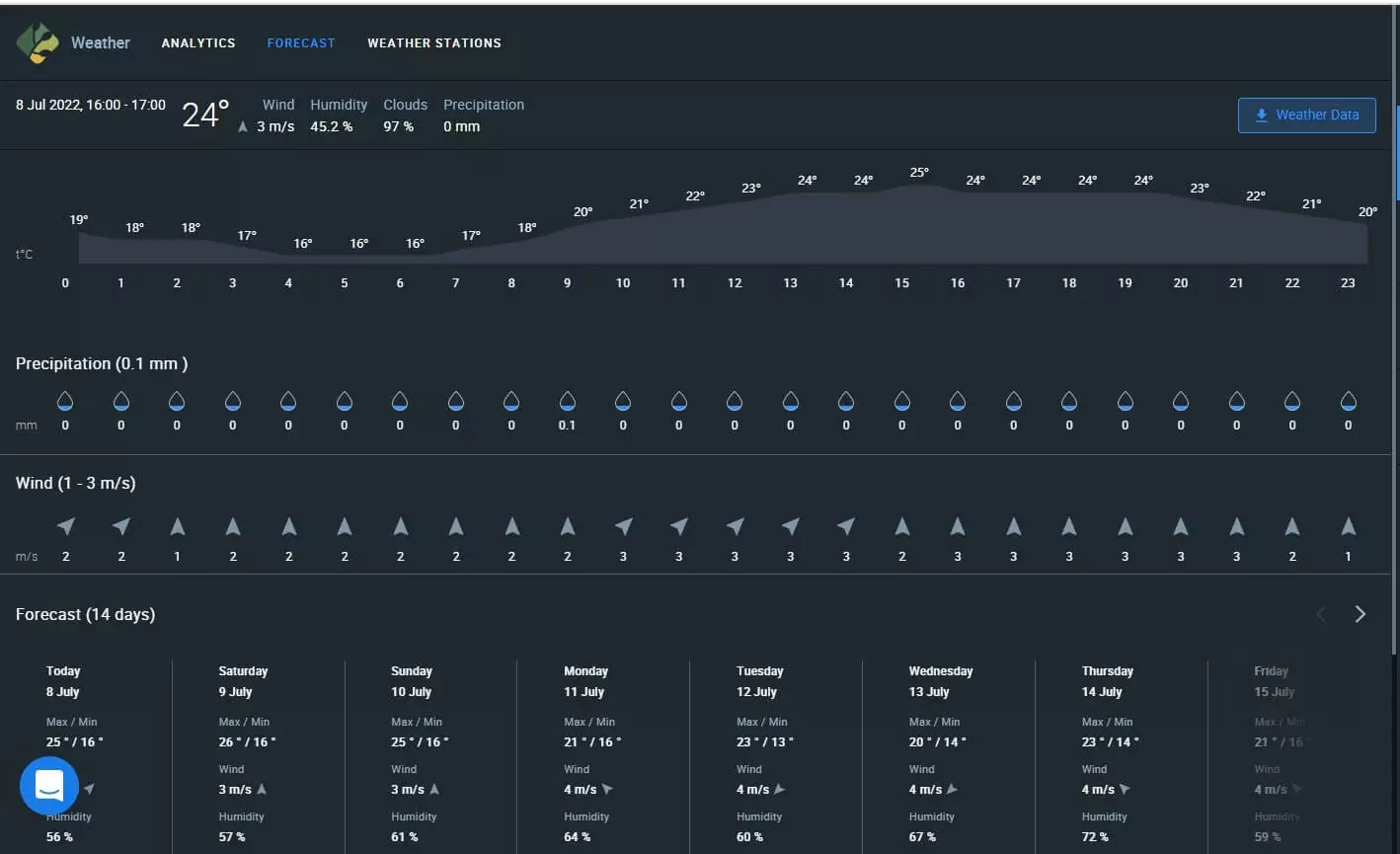
Pest Management
Protection of crops against pests means reducing pests and creating the most adverse conditions for their adaptation. Although some insects do not pose an economic threat to production, they can be disease vectors. Farmers should therefore protect crops from pests even if there is no immediate threat of culture damage. This type of yield protection may include the following methods:
- biological control;
- culture rotation;
- scouting.
Integrated crop protection (use of several strategies) is the most effective. It involves monitoring and preventing damage. In this way, farmers can reduce the number of pests and prevent the spread of diseases. So, high yields can be achieved.
Crop Rotation Management
Culture rotation is one of the most valuable and versatile crops protection methods. However, not all cultures are equally tolerant of the practice. For example, corn can be planted in the exact location for up to five years. On the other hand, rye, wheat, and sugar beet react negatively to double cropping but can produce higher yields if properly rotated. It is why farmers sometimes do not even use a three-field but a six-field system. EOSDA Crop Monitoring makes it easy to monitor plant rotation by providing data on the order in which cultures are grown in specific areas.
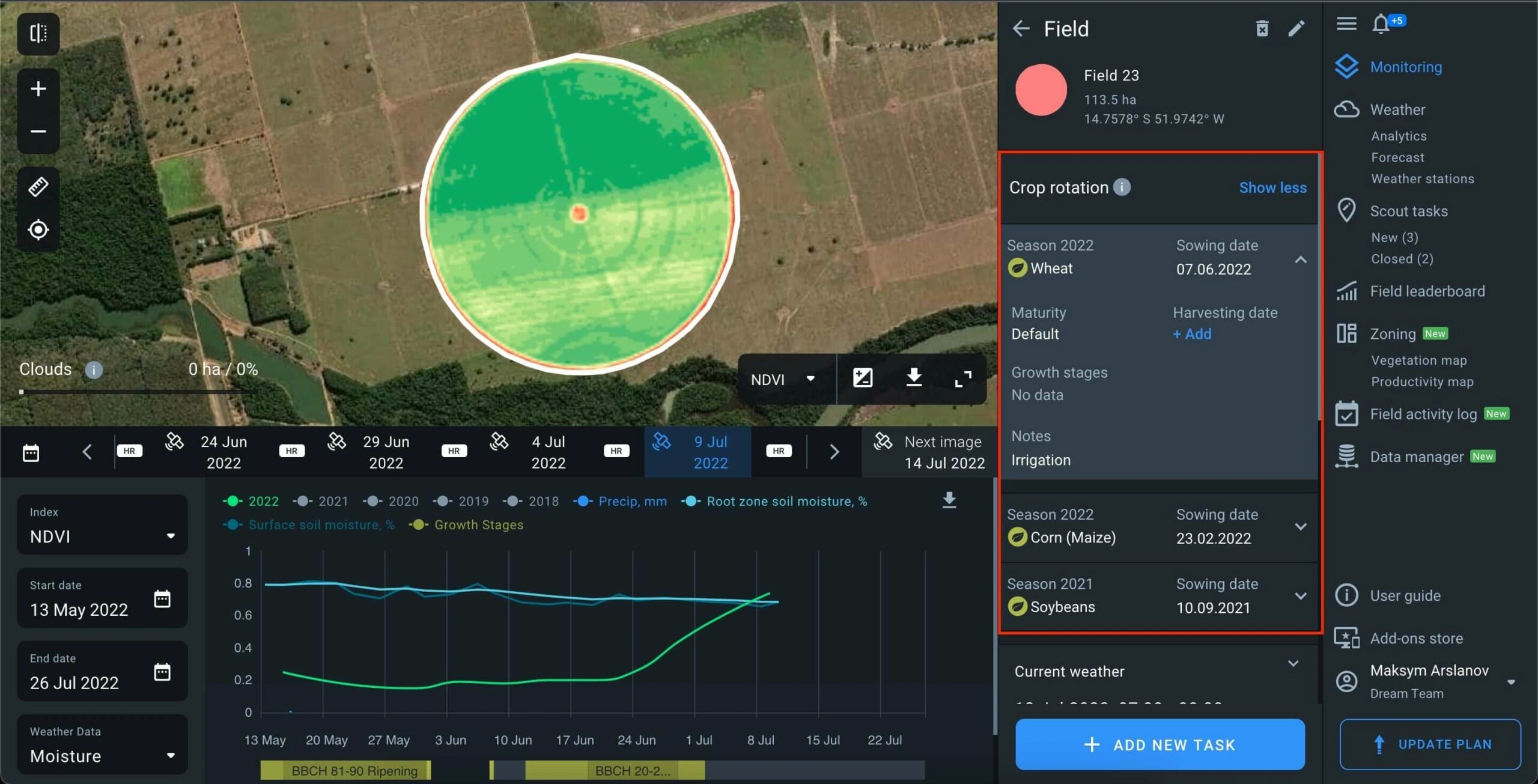
Irrigation System Optimization
The proper soil moisture level has a crucial influence on plant health and yields. To determine this, you need to consider rainfall and irrigation measures and the topography. A lack or, conversely, an abundance of moisture can weaken cultures and encourage the growth of weeds. Thus, farmers must use preventive measures to protect crops. EOSDA Crop Monitoring uses the NDMI vegetation index to identify problem areas that suffer from a deficiency or excess moisture. It enables platform users to optimize irrigation management.
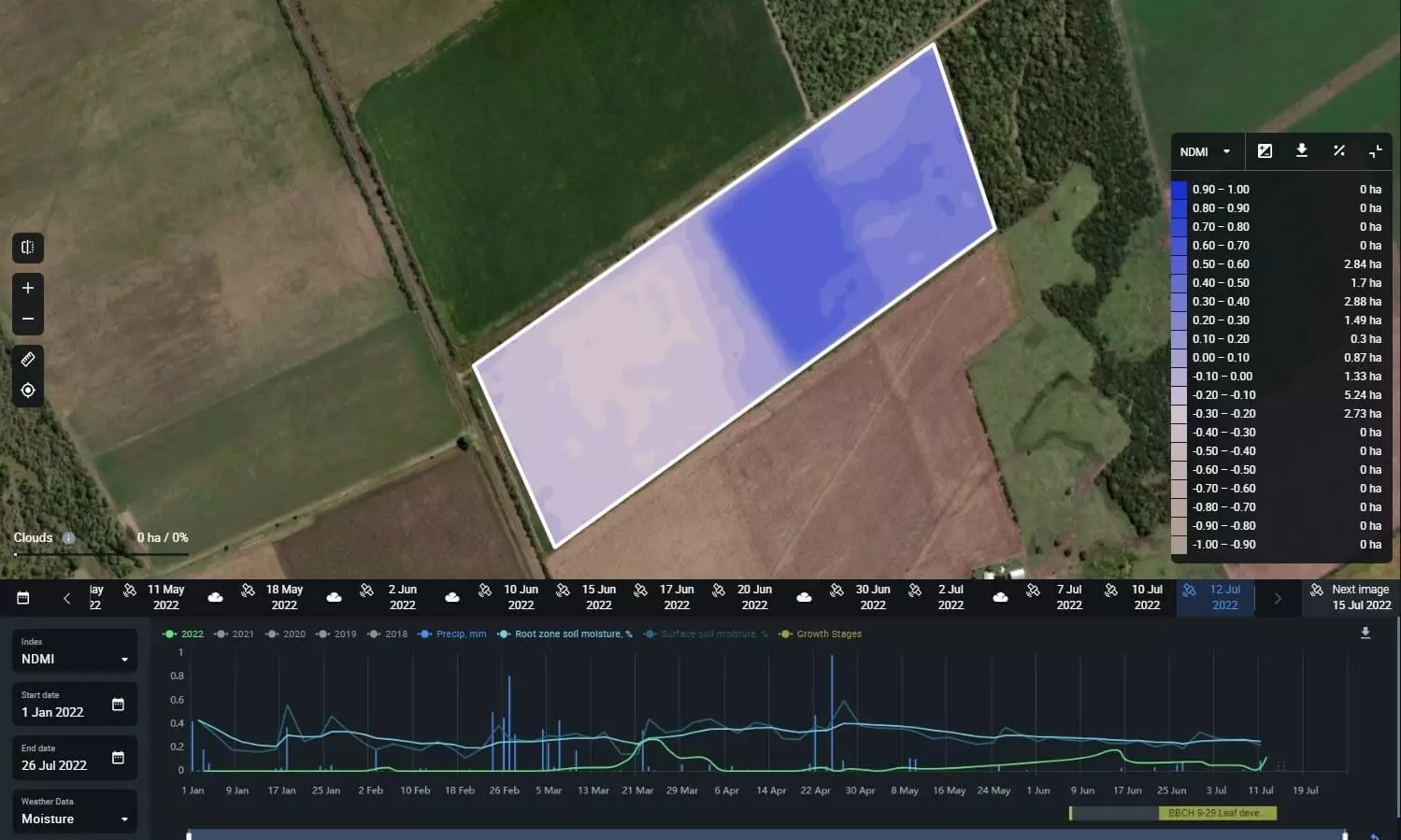
EOSDA Crop Monitoring Ag Industry Solutions To Protect Crops
An increasing world population is demanding ever more significant quantities of food. So efficient use of resources is critical to maximizing yields from each field. Today’s technologies make it possible to protect crop yields and increase production outputs and product quality.
Crop protection solutions use AI to collect and analyze large amounts of data. It provides farmers with detailed culture and soil conditions for plant protection planning. EOSDA Crop Monitoring is an excellent example of the helpfulness of remote sensing for crop protection. The platform effectively takes care of the health of the soil, reducing the risk of plant diseases and pests. Moreover, it provides data on plant health, moisture levels, and weather changes that significantly affect agriculture.
With field monitoring, agricultural cooperatives and large farms can analyze the productivity of their land over the past five years. It enables them to plan culture rotation. The platform is not only suitable for farmers but also for service providers and input suppliers. For example, pesticide manufacturers can test chemicals on particular fields, visually evaluating their crop protection performance. Insurance companies can monitor their clients’ fields to determine the causes of crop damage and objectively assess the quality of agricultural work. For example, reduced yields due to pest activity or disease require farmers to treat their fields accordingly. If they have not done so, insurance companies may reduce the payments on the policy.
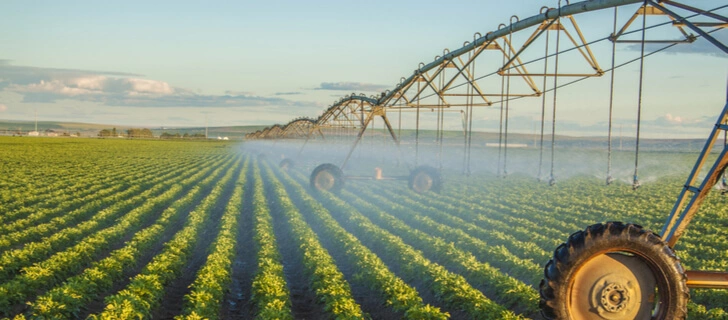
Using crop protection technologies for preventive actions is more effective than tackling a problem that has already occurred. In particular, it saves a great deal of effort and money. With EOSDA Crop Monitoring, you can monitor the essential parameters of agricultural production: field conditions and weather changes. This way, it’s possible to identify the most dangerous risks and create individual work plans, including preventive steps.
Crop Protection And The Environment
Chemical products for culture protection can be harmful for the environment, so governments regulate their use at a legal level. For example, the U.S. Environmental Protection Agency has developed federal regulations based on an environmental risk analysis. The incorrect use of pesticides can cause severe damage to the environment. Sustainable crop protection is, therefore, the best solution to ensure nature conservation, resource-saving, and high yields. Modern technologies allow achieving these goals most effectively.
Thus, crop protection is an essential element of agriculture, without which it is impossible to obtain stable yields yearly. No matter what threat you are fighting, plant protection management must be carefully planned and include a variety of practices to ensure the best outcome. Modern technologies such as remote monitoring will allow you to protect your yields and use resources as efficiently as possible.
About the author:
Vasyl Cherlinka is a Doctor of Biosciences specializing in pedology (soil science), with 30 years of experience in the field. He attended the engineering college in Ukraine and received his degree in agrochemistry, agronomy and soil science in the Chernivtsi National University. Since 2018, Dr. Cherlinka has been advising EOSDA on problems in soil science, agronomy, and agrochemistry.
Recent articles

Analyze 2025 & Plan Your Best Year Yet: LandViewer Christmas Offer
It’s the most wonderful time of the year! The Christmas holidays are here, and so is your chance to analyze 2025 and plan a prosperous 2026 with more affordable Pro plans in LandViewer.

EOSDA Models Climate Change Impact On Sugarcane Yields
EOSDA modeled future temperature, rainfall, and other climate impacts on Veracruz sugarcane. The results help growers plan long-term adaptation strategies, including timing, varieties, and irrigation.

EOSDA LandViewer Black Friday Sale: Exclusive Offers & Giveaway
This Black Friday, LandViewer offers new users the chance to save on monthly plans, get extra months with yearly subscriptions, and participate in a free annual plan giveaway.